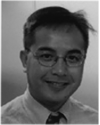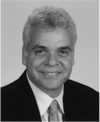Abstract
Emerging technologies have gained notoriety as a catalyst of socioeconomic progress, but have also inspired a revolution in ethics. Here, we provide an overview of ethics in stem cell-based therapies and offer a compelling argument for a need to establish an Ethics Research Consortium that will be tasked to assemble an interdisciplinary panel of experts who will apply ethical principles to analyze the social merit relative to the economic incentives of this emerging technology. Milestone studies on cell therapy in Parkinson’s disease and stroke over the last two decades were the focus of this commentary. The major criterion for study selection was based on public opinion, scientific discussion, and government reactions generated by these pioneering studies. Original data from the selected studies are presented. Interpretation and discussion of data captured the prevailing views of the public and scientific community, as well as the government regulatory and oversight decisions (i.e., ban on embryonic stem cell research funding). Lessons learned from two decades of cell-based therapies indicate that poor management of the public discourse of ethics concerning emerging technologies might have contributed to misperceptions within both the public and the research community that have hindered the progress of scientific innovation and even delayed the clinical application of potentially life-saving treatments to critically ill patients. We propose the creation of a Consortium that will evaluate how these novel ethical issues in emerging technologies are addressed under current oversight and regulatory structures and where there may be gaps and need for revised or new public policy approaches.
Keywords: Ethics, Embryonic stem cells, Adult stem cells, Transplantation
The emergence of new technologies is typically accompanied by a host of unique ethical, legal, and social issues. In the past, poorly conceived approaches to examining and managing the public discourse of ethics concerning emerging technologies have led to public misperceptions of science that have distorted, deterred, and even halted the progress of real public deliberation regarding the goals and goods of scientific innovation. Although cell-based therapy has been around for a century, this controversial treatment caught the public’s attention only in the late 1980s when human fetal tissues harvested from elective or spontaneous abortions were used as donor cells for transplantation in Parkinson’s disease (PD). The University of South Florida (USF) Department of Neurosurgery and Brain Repair was one of the few medical centers world-wide that conducted fetal tissue transplantation (6,10). Even early on, ethical concerns have surrounded fetal tissue research; in particular we were sensitive to the public perception of donor mothers as well as the aborted tissues (18). Other research institutions, including Georgetown University, argued against the use of fetal tissue in medical treatment and research, both on ethical and scientific grounds. Public sentiment against the therapeutic use of fetal tissue climaxed when the media exaggerated the scientific report that PD patients transplanted with fetal tissues displayed no recovery or even worsening symptoms compared to controls (5). Numerous rebuttals, via position articles and stem cell society symposium discussions from the scientific community, including USF Department of Neurosurgery and Brain Repair, called for clarification of these “negative” results to make it clear that the cells implanted in the patients in that study were processed differently than those implanted in other fetal tissue transplant procedures (i.e., lack of extensive cell culture manipulation), among other varying transplant protocols (e.g., dosages, severity of illness, etc.) (3,7). In hindsight, the failure to address these issues in a comprehensive manner played a key role in the public confusion about the findings of this clinical study.
Scientists also encountered logistical issues in the use of fetal tissue. Several fetuses were needed for transplant in one patient, which made the therapeutic use of fetal tissue impractical. A solution was to find alternative nonfetal cell sources that could be expanded and manufactured under quality controlled and assured conditions, thereby providing an ample and safe supply for transplant therapy. Such an approach had the advantage of avoiding both ethical and scientific problems. To this end, we provided the pivotal research studies for the world’s first clinical trials allowed by the U.S. Food and Drug Administration (FDA) for use of nonfetal, cultured human neural progenitor cells for implantation in stroke patients (4,9). However, these cells were cancer derived, leading to public fears of tumorigenesis (8,14). Safety issues became front and center in the cell therapy controversy.
The introduction of embryonic stem cells again catapulted the development of nonfetal cell therapy to the forefront of public attention. A point of controversy was that neither the public nor the government differentiated between an embryo and fetal tissue, and defined an embryo as a human life. About the same time that this debate was being played out in the media, there was further public worry that stem cell research could lead to human cloning. Human embryonic cell-based therapies became equated with the violation of human dignity. This perspective intensified with the ban on National Institutes of Health (NIH) funds for the support of embryonic stem cell research, a ban upheld throughout the 8 years of the Bush administration (11).
The pros and cons of this stem cell moratorium have been debated, and have prompted initiatives among states, most notably California, to pass legislation for the funding of embryonic stem cell research (17). Nonembryonic, adult stem cell research flourished during these years (2,19), with the FDA approving clinical trials in 2008 on human bone marrow-derived cells based on our pre-clinical data (1). In March 2009, President Barack Obama halted the stem cell research funding moratorium, noting the potential of these cells in treating human disorders for which no reliable treatment methods have been established (16). Thereafter, the National Institutes of Health released the Guidelines for Human Stem Cell Research, which became effective on July 7, 2009 (12).
Lessons learned through the history of cell-based therapies suggest that the public is easily swayed by the media, that reactive solutions by policy makers endorse public misperceptions, and that there is a lack of effective communication between scientists and the public that can be exploited by the media. The key issue here is neither malicious intent on the part of the media nor the resolution of a controversy one way or another because the swaying occurs in both directions. The key issue is the determination of an appropriate mechanism for public discourse and policy making in light of developing technologies. In particular, the public appears to be most affected by controversial elements in emerging technologies that create unreasonable hope in or fear of the technology. Although there may or may not be any valid reason for such hopes or fears, the media may be too quick to capitalize on these hopes and fears with its dual objective of reporting facts while making the news marketable. It is evident during emergence of a novel technology, such as stem-cell based therapies, that public sentiment, economic potential, and politics can be a powerful impetus for policy making and the direction taken by the research.
Ethical, legal, and social issues, when they are considered at all, are typically considered after the science is well under way and the resulting analysis fails to produce meaningful prospective guidance. Underlying the appreciable media hype and public discourse is the less discernible but fundamental quandary that the ethics of stem cell research is neglected criterion under current oversight and regulatory structures, in public perception, government policy making, media treatment, and scientific conduct. While some ethical discourse has taken place now with respect to stem cell research, the ethical issues arising in all stem cell-based therapy research, including intellectual property, commercialization, privacy, research participation, risk analysis, and conflicts of interest, have not been given sufficient consideration either in policy development or during regulatory assessments of protocols involving this emerging technology. Based on our experience serving in NIH study sections and other federal (U.S. Department of Veterans Affairs) and national (American Heart Association) agencies, and statewide foundations funding stem cell research, and in submitting grants and Investigational New Drug (IND) applications to NIH and FDA, respectively, there appears no solid guidance on requirements to satisfy the ethical issues enumerated above.
The still emerging technology of stem cell-based therapies serves as a logical focal point as we establish a process for the ethical review of this and other emerging technologies. Stem cell-based therapies incorporate many of the unique ethical, legal, and social concerns that are inherent in emerging technologies. The issues of privacy (preserving confidentiality of tissue donors and maintaining cell banks with their controversial storage of DNA material), intellectual property (the patenting of stem cell lines world-wide and the recent transition to the use of blood cells for induced pluripotent stem cells), commercialization (the current existence of dozens of companies licensing stem cell technology for further development), conflicts of interest (managing relationships between academia and the commercial entities that desire to license discoveries relating to cell-based therapies), and safety (the concerns about tumorigenesis in transplanting stem cells) all are significant in the context of this novel scientific technology.
Through the establishment of an Ethics Research Consortium, it is expected that the ethical, legal, and social issues surrounding stem cell-based therapy will be identified and analyzed through an interdisciplinary approach and that meaningful guidance for regulatory agencies and other policy-making bodies will be produced. For example, the Consortium can provide ethically based regulatory options to the NIH in its ongoing development of guidelines for all stem cell research. The emphasis on a proactive over a reactive approach on ethical issues surrounding the use of stem cells will be a major distinguishing challenge for the proposed Consortium. In particular, it is envisioned that a Consortium will further implore the FDA to add a review of ethical issues, in addition to the routine safety and efficacy criteria, in approving clinical trials of stem cell therapy.
Our approach to addressing public perceptions regarding emerging technology hinges on public opinion, which has many definitions. A widely accepted one defines public opinion as the aggregate of the expressed views of individuals on issues of public interest. Our first challenge in the area of public opinion is to determine what the public opinion is on issues pertaining to stem cell-based tissue engineering research and therapies. Once determined, the challenges with respect to public opinion that are addressed by our proposal are threefold: 1) how to recognize and integrate public opinion into the policy-making process; 2) how to determine in the midst of differing opinions whether or not there is a general sense of the common good stem cell research is to achieve; and 3) whether public opinion on the various ethical issues can be integrated by education or other means in order to promote a course of action most likely to promote health and to enhance the common good.
To establish baseline data regarding the public’s views on unique ethical, legal, and social issues concerning stem cell-based tissue engineering and eventually other emerging technologies, the Consortium will conduct three initial focus groups with opinion leaders in the community (Baseline Focus Groups) with the purpose of obtaining baseline opinions, views, beliefs, and concerns about stem cell-based tissue engineering research and therapies. A potential problem with the focus group approach is that results from focus group sessions cannot be generalized. However, focus groups have been quite successful in identifying issues that can be explored further using other research methodologies. Because the public opinion sought is to identify the public’s issues and concerns, we believe that the focus group approach will be adequate for purposes of our proposal.
For integrating public opinion into the policymaking process, the Consortium will conduct a second set of three community focus groups with the same individuals involved in the Baseline Focus Groups. In this second set of focus groups (Educational Focus Groups), the Consortium will educate the focus group members on the current scientific information and will introduce the policy and regulatory recommendations developed by the Panel from the feedback obtained from the first group to address the unique ethical, social, and legal issues attendant to stem cell research and therapies. The Consortium will then ask the focus group members to return to their communities, to think over and discuss the recommendations and to consider whether the policy and regulatory recommendations proposed by the Panel adequately address the concerns of the community members represented by the focus group. After a sufficient period of time, the focus group members will be asked to return for a third and final focus group (Educational Follow-Up Focus Groups) to give their considered feedback on the policy and regulatory recommendations. The focus group members’ feedback will be incorporated into the final policy and regulatory recommendations that will be included in a report documenting the Panel’s activities (the Consortium Report).
In determining whether public opinion on ethical issues can be integrated into policies that reflect a broad vision of the common good, we envision Educational Follow-Up Focus Groups, whereby focus group members will be reinterviewed to assess their opinions, views, beliefs, and concerns about stem cell-based tissue engineering research and therapies using the same questions asked in the Baseline Focus Groups. Data will be collected and analyzed to determine whether the opinions, views, beliefs, and concerns of these focus group members have changed in response to the education provided on the scientific information and/or in response to the recommendations crafted by the Panel to address their ethical, social, or legal concerns. The focus group members will also be asked, if their opinion has changed, to what they attribute the change. We will then analyze the data obtained to determine whether the positions on the ethical issues changed for these focus groups.
To confirm the results, each original focus group member (i.e., those who participated in all of the first three focus groups) will be asked to identify constituent within their community that would be willing to participate in a final focus group to solicit the constituent focus group’s baseline opinions on stem cell research and therapies (Constituent Opinion Focus Group). The original focus group members will be directed to provide educational materials to the selected constituent in a package including some or all of the following: an informational brochure explaining the scientific information, a link to an identified informational website(s) where the ethical issues of stem cell research are discussed, the recommendations crafted by the Panel to address the ethical issues, and any other training modalities determined by the Consortium. The original focus group member will also be requested to discuss the issue with the identified constituent. The Consortium will then conduct a Constituent Opinion Focus Group with the purpose of obtaining baseline opinions, views, beliefs, and concerns of the constituent about stem cell-based tissue engineering research and therapies. Data will be collected and analyzed to assess the opinions, views, beliefs, and concerns of the constituent focus group members. Through this approach we will assess whether public opinion on ethical issues represented by the selected focus groups is fixed, or whether it changes in response to the education provided on the scientific information, the group discussions of benefits and harms related to this research, and/or in response to the recommendations crafted by the Panel.
The overall impact of establishing the Ethics Research Consortium will be the unprecedented, deliberate, and proactive assessment of public opinion about stem cell research, which will form the basis for soliciting revisions to or creation of institutional, state, national, and even global regulatory oversight on this emerging technology. The Consortium should recognize the multifaceted underpinnings —catalysts and impediments—to the direction and progress of stem cell therapy and seek to address critical barriers to the understanding both by the public and the research community of the desired potential of stem cell therapy. For example, communication of stem cell science is currently reliant on the mass media, which has resulted in many misperceptions of stem cells, and also ill-advised government policies. The Consortium’s activities should be designed to close the gap between science information and the public’s sense of the common good, and to provide evidence-based ethical tools for policy making. In tackling the multifaceted challenges posed by emerging technologies, the Consortium needs to accommodate a multidisciplinary and multipronged approach. Such an innovative strategy will empower the Consortium to direct public forums, to critically analyze the social costs and merits of alternative regulatory options, and to develop training programs on ethics and emerging technologies, all of which are thematically focused on the overarching goal of bridging the gap between science and the common good as a pathway towards a well-informed, educated, and evidence-based government policy making.
The Consortium will be established via formation of a “think tank” within an educational/research institution consisting of academic scientists, ethicists, and policy experts, as well as opinion leaders from both public and private sectors. Through regular discussion forums and surveys, an assessment of public opinion, using the ethical parameters mentioned above (e.g., the common good, intellectual property, commercialization, privacy, research participation, risk analysis, and conflicts of interest), will form the basis for the recommendations of the Consortium about regulatory oversight. A position paper will be published in a peer-reviewed journal, and sent as an open letter to NIH, FDA, and other agencies with interest in stem cell research. The strategy is to augment the currently available guidelines of NIH, FDA, and other agencies in resolving ethical issues in stem cell research during the reviews of grant protocols and IND applications.
Our proposed Consortium will be responsible in recognizing and integrating public opinion for policy making in stem cell research. Embedded in this mission is to disseminate our results to the public and the funding agencies, in the hope of allowing transparency and promoting public accountability of stem cell research using public funding.
In summary, the overarching goal of the Ethics Research Consortium is to integrate public opinion and the public’s desired good with the dynamically evolving stem cell-based therapies utilizing evidence-based scientific research, proactive government policy making, and responsible communication. The Consortium’s work will be the proof of concept for an ethics committee within an institution tasked to assess the prospective application of ethics and ethical questions in novel technologies by a governing entity, such as an oversight or regulatory body. Moreover, whereas the initial focus of the Consortium is in stem cell technology, the proposed research tools (public forums, surveys, gap and risk assessments, interviews, etc.) can be modified to examine similar ethical issues associated with other emerging technologies such as nanomedicine and bioengineering (13,15). In addition, pilot studies for the Consortium can start at the community level, but subsequent large-scale studies should target the national level as an ultimate desire to better understand national public opinion on emerging technologies. The transition from community level to national representation may benefit from philosophical and policy reflections of a participatory democracy. Such national representation should provide solid and comprehensive guidance from the American population that will be critical to public policy making. Finally, the recognition that rapid progress in medical breakthroughs in stem cell research, while arguably dictated by science, is equally at the mercy of socioeconomic and political incentives, as well as public perception, should be a key rallying agenda for the Consortium to foster better coordination between public opinion and public policy to help ensure that polarized public discourse does not deter progress toward the good of each and all.
Acknowledgments
ACKNOWLEDGMENTS AND DISCLOSURE: The authors express sincere gratitude to Ms. Rebecca Miro for excellent assistance in the manuscript preparation. Drs. Borlongan and Sanberg serve as consultants to a number of stem cell-based companies, and are members of American Society of Neural Therapy and Repair. The authors have pending NIH grants on the topics of stem cells and ethics.
Biographies

Cesar V. Borlongan, Ph.D., is a leader in stem cell research for stroke therapy and received his Ph.D. from Keio University. His innovative translational “bench to clinic” research was central to the first FDA-approved clinical trial of cell transplantation in stroke patients, which has reached Phase II in 2005. He has since served as the academic collaborator for a number of stem cell-based therapy companies, ensuring safety and efficacy of these novel biologics for clinical application. He previously held positions at the NIH and was a Professor of Neurology at the Medical College of Georgia, where he also served as the Director of the Neurology Cell Transplantation Program. He is currently a Professor and the Vice-Chairman for Research at the University of South Florida Department of Neurosurgery and Brain Repair, as well as Associate Director of the University of South Florida Center of Excellence for Aging and Brain Repair. Dr. Borlongan is strongly involved in NIH peer review committees and maintains an NIH Guest Researcher position. He is an inventor on seven U.S. Patents and is a charter member of the National Academy of Inventors.

Camille McWhirter, J.D., is Director of Research Compliance for the USF Health Office of Research at the University of South Florida. She has been employed with the University of South Florida since 1994, when she joined the Office of the General Counsel. Her current responsibilities include the planning, design, development, management, and evaluation of the USF Health conflict of interest in research review process; administrative oversight of the USF Health Conflict of Interest Committee; and training programs in conflicts of interest and research misconduct. She holds a law degree from the University of Virginia School of Law. Her areas of specialization include health care law, contracts, policy development, research misconduct, and conflicts of interest.

Caroline Fultz-Carver, Ph.D., M.H.A., C.C.E.P., began her professional life as a hematopoietic progenitor stem cell researcher. She then joined the Health Sciences Advisory Group of Ernst and Young LLP as a consultant and provided her scientific, financial, and managerial expertise to a variety of for-profit and academic entities. Upon joining the University of South Florida System in 2002, she developed and implemented their first human participant research Quality Assurance Program within the Division of Research Integrity and Compliance. In 2005 she became the USF System Research Integrity Officer for all USF System Research performed across four campuses and five affiliate sites. Two years later she was asked to serve as the Interim Director for the Division and led its Human Research Protections Program to achieve full accreditation in June 2008, the first university HRPP in the State of Florida to achieve this national distinction. She currently is the Associate Compliance Officer for University of South Florida System in their Institutional Compliance & Ethics Programs. She received her Ph.D. and M.H.A. from the University of South Florida.

Kevin T. FitzGerald, S.J., Ph.D., Ph.D., is the Dr. David Lauler Chair of Catholic Health Care Ethics in the Center for Clinical Bioethics at Georgetown University. He is also an Associate Professor in the Department of Oncology at the Georgetown University Medical Center. He received a Ph.D. in molecular genetics, and a Ph.D. in bioethics, from Georgetown University. His research efforts focus on the investigation of abnormal gene expression in cancer, and on ethical issues in biomedical research. He has published both scientific and ethical articles in peer-reviewed journals, books, and in the popular press. Fr. FitzGerald has given presentations nationally and internationally, and often been interviewed by the news media, on such topics as human genetic engineering, cloning, stem cell research, and personalized medicine. He is a founding member of Do No Harm, a member of the ethics committee for the March of Dimes, and a member of the American Association for the Advancement of Science Program of Dialogue on Science, Ethics, and Religion. In addition, he served until March 2009 as a member of the DHHS Secretary’s Advisory Committee on Genetics, Health, and Society.

Paul R. Sanberg, Ph.D., D.Sc., is Senior Associate Vice President for Research & Innovation, Distinguished University Professor, Executive Director of the Center of Excellence for Aging and Brain Repair, and Vice Chairman of Academics for the Department of Neurosurgery and Brain Repair in the College of Medicine, at the University of South Florida. Dr. Sanberg trained at York University, the University of British Columbia, the Australian National University, and Johns Hopkins University School of Medicine, among others. Before coming to USF, Dr. Sanberg held academic positions at Ohio University, the University of Cincinnati, and Brown University. He has also held positions with cell therapy companies, including Saneron CCEL Therapeutics, Inc., CytoTherapeutics, Inc., and Layton BioScience, Inc. Dr. Sanberg is a member of the Board of Scientific Counselors for the National Institute of Drug Abuse at the National Institutes of Health, and serves on numerous scientific advisory boards for health-related foundations and companies. He is the co-editor-in-chief of Cell Transplantation, editor-in-chief of Technology and Innovation, and serves on editorial boards for more than 25 scientific journals. Dr. Sanberg is the Executive Director of the American Society for Neural Transplantation and Repair, and the President of the National Academy of Inventors. He is the author of more than 500 scientific articles, and 13 books, including Cell Therapy, Stem Cells and Brain Repair (Humana Press, 2006). Dr. Sanberg is an inventor on approximately 30 health-related U.S. patents. His research has focused on discovering innovative ways to repair the damaged brain, and has helped lead the team that demonstrated that bone marrow and umbilical cord blood-derived stem cells can be transformed to neural cells that may be useful in stroke, spinal cord injury, and ALS.
REFERENCES
- 1.Borlongan CV. Cell therapy for stroke: Remaining issues to address before embarking on clinical trials. Stroke. 2009;40:146–148. doi: 10.1161/STROKEAHA.108.533091. [DOI] [PMC free article] [PubMed] [Google Scholar]
- 2.Borlongan CV, Chopp M, Steinberg GK, Bliss TM, Li Y, Lu M, Hess DC, Kondziolka D. Potential of stem/progenitor cells in treating stroke: the missing steps in translating cell therapy from laboratory to clinic. Regen. Med. 2008;3:249–250. doi: 10.2217/17460751.3.3.249. [DOI] [PMC free article] [PubMed] [Google Scholar]
- 3.Borlongan CV, Sanberg PR. Neural transplantation for treatment of Parkinson’s disease. Drug Discov. Today. 2002;7:674–682. doi: 10.1016/s1359-6446(02)02297-3. [DOI] [PubMed] [Google Scholar]
- 4.Borlongan CV, Tajima Y, Trojanowski JQ, Lee VM, Sanberg PR. Transplantation of cryopreserved human embryonal carcinoma-derived neurons (NT2N cells) promotes functional recovery in ischemic rats. Exp. Neurol. 1998;149:310–321. doi: 10.1006/exnr.1997.6730. [DOI] [PubMed] [Google Scholar]
- 5.Freed CR, Greene PE, Breeze RE, Tsai WY, DuMouchel W, Kao R, Dillon S, Winfield H, Culver S, Trojanowski JQ, Eidelberg D, Fahn S. Transplantation of embryonic dopamine neurons for severe Parkinson’s disease. N. Engl. J. Med. 2001;344:710–719. doi: 10.1056/NEJM200103083441002. [DOI] [PubMed] [Google Scholar]
- 6.Freeman TB, Olanow CW, Hauser RA, Nauert GM, Smith DA, Borlongan CV, Sanberg PR, Holt DA, Kordower JH, Vingerhoets FJG, Snow BJ, Calne D, Gauger LL. Bilateral fetal nigral transplantation into the postcommissural putamen in Parkinson’s disease. Ann. Neurol. 1995;3:379–388. doi: 10.1002/ana.410380307. [DOI] [PubMed] [Google Scholar]
- 7.Hagell P, Piccini P, Björklund A, Brundin P, Rehncrona S, Widner H, Crabb L, Pavese N, Oertel WH, Quinn N, Brooks DJ, Lindvall O. Dyskinesias following neural transplantation in Parkinson’s disease. Nat. Neurosci. 2002;5:627–628. doi: 10.1038/nn863. [DOI] [PubMed] [Google Scholar]
- 8.Hara K, Yasuhara T, Maki M, Matsukawa N, Masuda T, Yu SJ, Ali M, Yu G, Xu L, Kim SU, Hess DC, Borlongan CV. Neural progenitor NT2N cell lines from teratocarcinoma for transplantation therapy in stroke. Prog. Neurobiol. 2008;85:318–334. doi: 10.1016/j.pneurobio.2008.04.005. [DOI] [PubMed] [Google Scholar]
- 9.Kondziolka D, Wechsler L, Goldstein S, Meltzer C, Thulborn KR, Gebel J, Jannetta P, DeCesare S, Elder EM, McGrogan M, Reitman MA, Bynum L. Transplantation of cultured human neuronal cells for patients with stroke. Neurology. 2000;55:565–569. doi: 10.1212/wnl.55.4.565. [DOI] [PubMed] [Google Scholar]
- 10.Kordower JH, Freeman TB, Snow BJ, Vingerhoets FJ, Mufson EJ, Sanberg PR, Hauser RA, Smith DA, Naue GM, Perl DP, Olanow CW. Neuropathological evidence of graft survival and striatal reinnervation after the transplantation of fetal mesencephalic tissue in a patient with Parkinson’s disease. N. Engl. J. Med. 1995;332:1118–1124. doi: 10.1056/NEJM199504273321702. [DOI] [PubMed] [Google Scholar]
- 11.National Institute of Health, U.S. Department of Health and Human Services. Human Embryonic Stem Cell Policy Under Former President Bush (August 9, 2001–March 9, 2009) http://stemcells.nih.gov/policy/2001policy.
- 12.National Institutes of Health Guidelines on Human Stem Cell Research. http://stemcells.nih.gov/policy/2009guidelines.htm.
- 13.Neuss S, Stainforth R, Salber J, Schenck P, Bovi M, Knüchel R, Perez-Bouza A. Long-term survival and bipotent terminal differentiation of human mesenchymal stem cells (hMSC) in combination with a commercially available three-dimensional collagen scaffold. Cell Transplant. 2008;17:977–986. doi: 10.3727/096368908786576462. [DOI] [PubMed] [Google Scholar]
- 14.Newman MB, Misiut I, Willing AE, Zigova T, Karl RC, Borlongan CV, Sanberg PR. Tumorigenicity issues of embryonic carcinoma-derived stem cells: relevance to surgical trials using NT2 and hNT neural cells. Stem Cells Dev. 2005;14:29–43. doi: 10.1089/scd.2005.14.29. [DOI] [PubMed] [Google Scholar]
- 15.Nolan K, Millet Y, Ricordi C, Stabler CL. Tissue engineering and biomaterials in regenerative medicine. Cell Transplant. 2008;17:241–243. doi: 10.3727/096368908784153931. [DOI] [PubMed] [Google Scholar]
- 16.Obama B. Executive Order 13505. Removing Barriers to Responsible Scientific Research Involving Human Stem Cells. Fed. Reg. 2009;74(46):10667–10668. [Google Scholar]
- 17.Sanberg PR. Stem cell research’s reversal of fortune. Scientist. 2005;19:12. [Google Scholar]
- 18.Sanberg PR. Students’ views on fetal neural tissue transplantation. Lancet. 1990;335:1594. doi: 10.1016/0140-6736(90)91424-9. [DOI] [PubMed] [Google Scholar]
- 19.Willing AE, Eve DJ, Sanberg PR. Umbilical cord blood transfusions for prevention of progressive brain in-jury and induction of neural recovery: An immunological perspective. Regen. Med. 2007;2:457–464. doi: 10.2217/17460751.2.4.457. [DOI] [PubMed] [Google Scholar]


